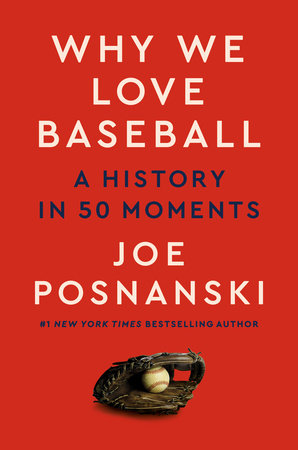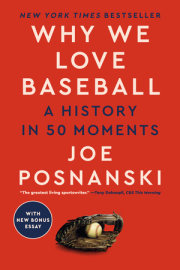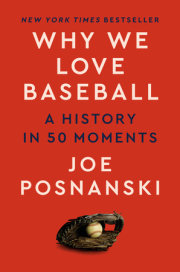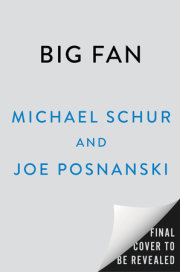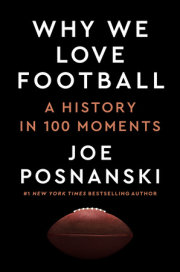Five Unlikely Homers The Gaylord Perry Moon Shot moment that leads off this book may be my favorite unlikely homer. It's my go-to whenever someone asks for a baseball story. There are few things more thrilling in the game than the unlikely home run.
You know about Gaylord. Here are four more:
Rick Camp (July 4, 1985) "People thought Rick couldn't hit," Dale Murphy is saying. "But they didn't see Rick the way we teammates did. They didn't see him take batting practice. They didn't see him swing in the cage."
Dale, a two-time most valuable player, smiled.
"They thought he couldn't hit," he continued. "But we knew he couldn't hit."
Rick Camp was a multi-use pitcher for the Braves between 1976 and 1985. Sometimes he started. Sometimes he relieved. He threw a heavy sinker that could be quite effective.
But as a hitter-no.
Flash to one of the wildest games in baseball history, an Independence Day extravaganza between the Braves and the New York Mets in Atlanta. Forty-four thousand fans showed up, mostly to catch fireworks after the game. None of them knew that the fireworks would not go off until four or so the next morning.
The game was delayed by rain, and then the game jumped around like microwave popcorn. The Mets led, the Braves led, the Mets led, the Braves led; then in the top of the ninth the Mets tied the game off future Hall of Famer Bruce Sutter. Extra innings. The Mets scored two in the 13th. The Braves also scored two in the 13th. On it went.
Finally in the 18th inning-at about three the morning of July 5-the Mets scored off Rick Camp and it finally looked like the game would end. The first two Atlanta batters in the ninth inning made outs and that brought up Camp. Under any other circumstances, the Braves would have pinch-hit for him. Camp was a lifetime .059 hitter. He'd not had a hit all year.
The Mets' Tom Gorman was pitching. Catcher Gary Carter waved the outfielders in . . . and he just kept on waving even as they got closer and closer. Mets pitching coach Mel Stottlemyre jogged to the mound and Gorman expected some scouting advice or a pep talk. Instead Stottlemyre said, "You better get him out." Then he jogged back to the dugout.
Up in the Atlanta Braves' broadcasting booth, John Sterling said to his partner Ernie Johnson Sr.: "Ernie, if he hits a home run to tie this game, this game will be certified as absolutely the nuttiest in the history of baseball."
Gorman got ahead in the count 0-2. He then threw a pitch up and Camp swung as hard as he could . . . and he connected. He hit his first big-league home run in the 18th inning of a meaningless game between Atlanta and New York . . . and no one in Atlanta will ever forget it.
"That," Atlanta catcher Bruce Benedict would say, "was the greatest thing I've ever seen."
There's one more fun part to this: The Braves lost anyway in the very next inning. The last batter of the game was, yes, Rick Camp. He struck out. Then the Braves shot off more fireworks for the few fans who remained at the end, sparking hundreds of complaints to the Atlanta police department.
Tom Lawless (October 21, 1987) In his career as a utility infielder and pinch runner, Tom Lawless hit three big-league home runs. He was such a mediocre hitter that once a Phillies relief pitcher named Tom Hume walked him . . . and Hume was released two days later.
One of Lawless's three homers came in the 1987 World Series.
He hit it off Minnesota ace Frank Viola, who would later call his pitch a "brutal, brutal fastball." The improbability of the home run was trumped by Lawless's even more improbable reaction. After he hit the ball, he walked slowly up the first-base line with the bat still in his hand. He just stared at the ball as it flew, the sort of thing Barry Bonds or Reggie Jackson might have done after hitting a 500-foot blast.
Was this a 500-foot blast? No, not even close.
"I think it hit about 1 foot over the fence," Cardinals' manager Whitey Herzog would say.
But even the strut was not the best part. No, the best part was that after the ball barely cleared the fence, and only then, Lawless flung the bat high in the air, like a cap thrown on graduation day, one of the more demonstrative celebrations in baseball history. If we were ranking top bat flips, this one would be in the top five. It broke at least a half dozen unwritten rules of baseball etiquette. "That was something strange to do, seeing that he's hit two home runs in his career," his teammate Gary Gaetti would say. "If I was pitching, I wouldn't forget it."
Lawless pleaded insanity. "I didn't mean anything, I just kind of blanked out there for a second," he said. "This never happened to me before."
Al Weis (October 16, 1969) By the time Al Weis came to the plate in the bottom of the seventh inning on a Thursday afternoon in New York-Game 5 of the 1969 World Series-he was already an unlikely hometown hero. He grew up 23 miles from Shea Stadium. He had been in the big leagues for seven years, an impressive accomplishment considering he could not hit. What he did was play excellent defense wherever needed, bunt upon request, and never complain.
"The best gag about Weis," Milton Gross wrote, "is that if he were hit on the elbow with a fastball, he wouldn't even say 'Ouch.'"
Weis's bat played a wildly unlikely role in the 1969 Miracle Mets run to the World Series. He hit only two home runs all season, but he hit them in back-to-back games against the league-leading Chicago Cubs. The Mets went on to catch the Cubs and win the pennant.
Then, in the World Series, Weis hit like he never had before. He singled off Baltimore's Dave McNally to drive in the winning run in Game 2. He got two more hits and drew a walk in Game 4. The Orioles couldn't get him out. Then came Game 5, and the Orioles led by a run going into the seventh inning. McNally was pitching again, and he missed his spot. Weis turned on it and hit the ball out to tie the game. The Mets completed the comeback and won one of the most surprising and wonderful World Series titles of them all.
After the game, Weis was asked how he did it. Naturally, he didn't say anything. But his teammate Bud Harrelson did:
"When Al hit that home run," Harrelson said, "I knew we had 'em."
Bartolo Colón (May 7, 2016) "He drives one! Deep left field! Back goes Upton. Back near the wall! It's outta here! Bartolo has done it. The impossible has happened. . . . The team vacates the dugout as Bartolo takes the long trot. His first career home run. . . . This is one of the great moments in the history of baseball. Bartolo Colón has gone deep."
-Mets' broadcaster Gary Cohen
OK, look, a big part of the joy is how four-time All-Star pitcher Bartolo Colón looked. He looked like me. He looked like you. He was 42 years old, and the media guide charitably listed him at 285 pounds. Ah, if only we all had a media guide to underestimate our true weight. Bartolo was shaped like a rectangle, and if you saw him walking around in the mall, you'd think, That guy's probably the high school history teacher everybody at school likes. The notion of his being a baseball player would never enter your mind.
It goes without saying he was an atrocious hitter; goes without saying he'd never hit a home run or come close. He was hitting .088 for his career and had struck out one of every two times he came to the plate. He had not gotten a hit all season.
James Shields was pitching for San Diego. He threw a fastball. Colón swung as hard as he could. The ball left the park. The moment was so intoxicating that even Shields himself got caught up in it.
"I'm happy for him," Shields said.
There are two things I love most about the home run. First is that his home run trot took him 30.5 seconds. That is longer than it took the injured Kirk Gibson to limp around the bases after his 1988 World Series home run.
"I want to say," Mets' announcer Ron Darling said, "that was one of the longest home run trots I've ever seen. But I think that's how fast he runs."
Second is the quote that Colon gave after the game when he explained his hitting approach. "Anytime I see a fastball, I swing hard," he said, "because I'm not a curveball hitter."
No. 50: The Real Duane KuiperAugust 29, 1977, Cleveland Baseball is the best it has been and the best it will ever be when you're 10 years old.
I was 10 years old in the summer of 1977 when Duane Kuiper hit his one home run.
Kuip was my hero. He was second baseman for my hometown Cleveland ballclub at the same time that I was second baseman for Reno, my South Euclid Youth Baseball Team. Oddly, our team did not have a nickname. We were just Reno. We were either named after the Biggest Little City in the World or Reno Browne, a 1940s B-movie actress who was married to the famous cowboy Lash LaRue.
Duane Kuiper and I shared more than just a position. I loved the way he played. He dived for every ball . . . and I do mean, every ball. If you hit the ball straight at him, he dived for it. If you played catch in your backyard anywhere in America in 1977, Kuip probably dived for that ball too. He played the game with verve and love, and OK, maybe he didn't hit with a lot of power and maybe he wasn't the fastest guy out there, but he exuded joy, and my grandest dream was to be just like him.
He hit his one home run on a Monday night. Cleveland was playing the Chicago White Sox at Cleveland Municipal Stadium, a mausoleum that smelled of stale beer and and broken dreams. Cleveland Municipal was strategically constructed to place steel beams in front of every fan in the ballpark.
I was not at the game-there were 6,236 people there, a sizeable crowd for Cleveland baseball in those days-so I listened to the broadcast on WWWE, 1100 on your AM radio dial. I listened while sitting on the beige carpeting in our so-called living room-we were rarely even allowed in there-and leaning against the speaker of the enormous Zenith music console my parents had bought on payments. That console was a dark wood, and it was the size of a coffin, and it looked like a coffin. The muffled voices of Cleveland broadcasters Herb Score and Joe Tait sounded like they might be trapped inside.
Herb Score was one of the greatest young pitchers in baseball history until he got hit in the eye by a Gil McDougald line drive, but I didn't know this until much later. Herb was much too modest to ever talk about his playing days. I'd describe Herb's announcing style as cheerful and just slightly confused, sort of like your grandfather calling a game. He began every broadcast by saying, "It's a beautiful day for baseball." Then, he'd go on, doing the best he could.
"Hey, Herb," a partner said, "that hit makes Cecil Cooper 19 for 42 against Tribe pitching."
"I'm not good at math," Herb replied. "But even I know that's over .500."
South Euclid's own Steve Stone was pitching for the White Sox. Kuip was the second batter of the game. On the second pitch, Stone threw a pitch he would call "a slider that did not slide." Duane Kuiper did something entirely out of character. He turned on it.
"That's headed for the wall," Herb's broadcast partner, Joe Tait, shouted, and then with a magnificent blend of shock and awe he added: "It's gone! Duane Kuiper has just hit his first Major League home run! How about that!"
"Hey," Herb said, "look at Duane running those bases!"
"Oh, is he one happy ballplayer!" Tait said.
I didn't hear that last part because I, too, was running around the bases, imaginary ones in the living room, and I shouted and howled until my mother told me to quiet down because she was watching the ABC comedy special McNamara's Band with John Byner.
"Did you know it was gone when you hit it?" reporters asked Kuip after the game.
"No," he said. "I don't think any ball I hit is gone."
That was it. After Duane hit the homer, he came up another 2,371 more times but he never hit another one. One home run in 3,754 plate appearances. Much later, after he had become a beloved broadcaster for the San Francisco Giants, the team held a special Duane Kuiper day. And they gave the fans a bobblehead of Kuip hitting the home run.
I have to tell something else even though it’s not directly related to the homer. As mentioned, Kuip did become an adored broadcaster in San Francisco.
Along the way, Kuip found out that I was his biggest fan. I mean, it was no secret-I wrote about him all the time. So, one day he found my wife Margo's email-she was writing a parenting blog at the time-and explained that he wanted to send me something. Margo is a casual baseball fan; all she knew about Duane Kuiper was that he was my hero.
"I'm assuming that you're the real Duane Kuiper," she wrote back to him, "though in today's internet age, it's not always so easy to tell."
Kuip loved that so much. He was not expecting anyone to ever think he was pretending to be Duane Kuiper.
"It's hard for me to say, with a straight face, that I'm the real Duane Kuiper," he wrote. "So, I'll say it with a smile. I'm the real Duane Kuiper."
Anyway, not long after, I got a package in the mail with an authentic game-used Duane Kuiper bat, an authentic game-used Duane Kuiper cap, and various other priceless items.
"I've come to realize that my family doesn't think this stuff is as cool as I think it is," he wrote.
My friends, almost all of them, had childhood baseball heroes who were better players than my Duane Kuiper. They idolized Tom Seaver and George Brett and Reggie Jackson and Wade Boggs and Frank Thomas and players like that.
I wouldn't trade my hero for all of them put together.
Why do I love baseball? I'm going to go and swing my Duane Kuiper bat and think about it.
Copyright © 2023 by Joe Posnanski. All rights reserved. No part of this excerpt may be reproduced or reprinted without permission in writing from the publisher.

